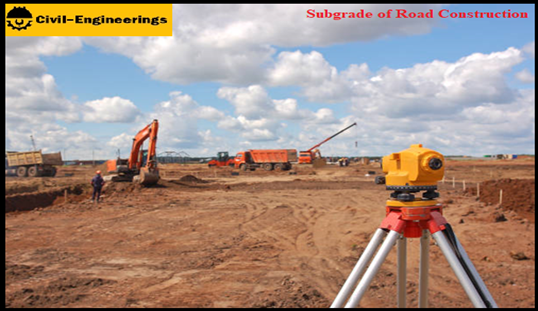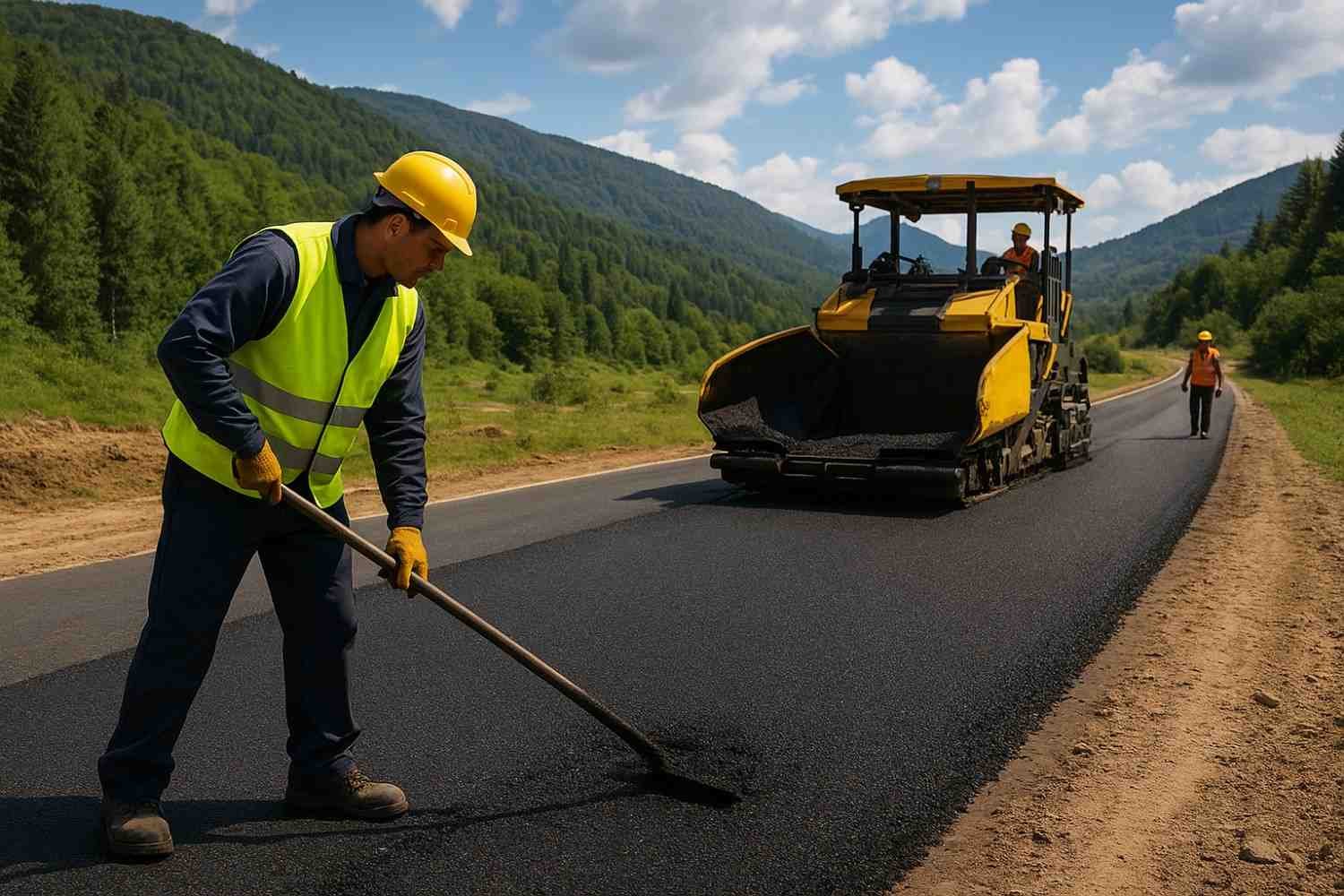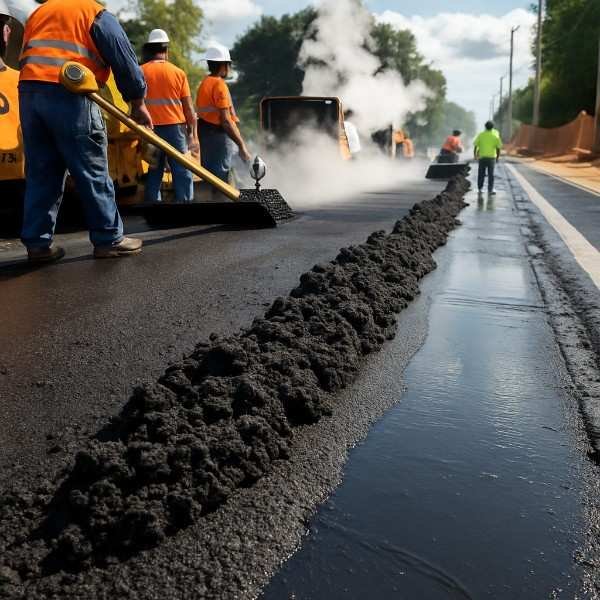Table of Contents
Introduction
Subgrade in road construction is the most important layer because it is the first layer from the bottom that will bear the entire load of road, including the self-load of road and vehicle’s load. Subgrade preparation involves preparing the natural soil to provide a stable foundation for the road. Subgrade must be properly compacted and graded to support the weight of the road efficiently and preventing settlement or deformation..
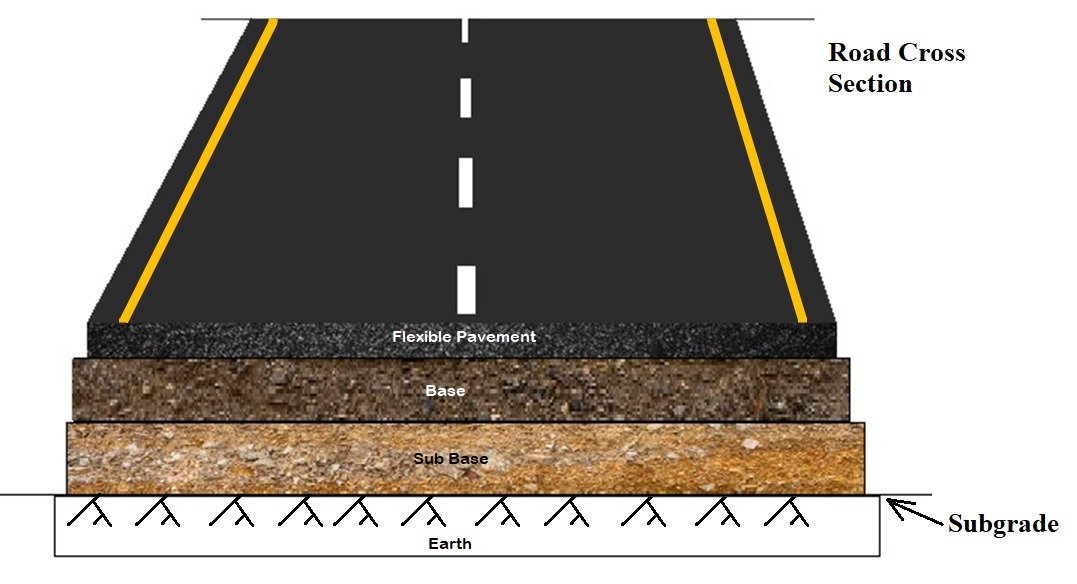
Subgrade of Road Construction - Preparation Procedure
a. Clearing and Grubbing
Clearing and Grubbing is the process of clearing and cleaning nature ground area for road construction. Removal upto 30 cm depth of stumps, roots, bushes and trees with less than 225 mm girth, vegetation and other objectionable material and disposal of all surface objects is essential.
b. Stripping
The areas from which stripping of topsoil is required shall be as indicated on the drawings. Remove topsoil from these areas to depth as directed by Site Engineer. Stripping of topsoil in any case shall not be less than 10 cm in depth.
c. Cutting and Filling
Cutting and filling in road subgrade preparation is the process of achieving the desired level of road subgrade. Subgrade level is calculated by deducting the total thickness of subbase, base and wearing course from the road’s top level. If the natural ground level is below the subgrade level then filling with soil is done and if the natural ground level is above the subgrade level then cutting will be done.
d. Compaction of Natural Ground
In case of cutting the natural ground surface will be consider as subgrade. The subgrade soil is then compacted using heavy machinery such as rollers or compactors. Compaction increases the soil's density and strength, reducing its susceptibility to settling under the weight of the road. Upto a depth of twenty (20) cm below the natural ground, all solids and vegetation shall be removed and clear surface shall be broken up by ploughing and scarifying. The natural ground will be compacted upto a depth of 20 cm to a degree as defined below:
| S.No. | Height of Embankment (cm) | Percent of MDD (AASHTO T-180) |
|---|---|---|
| 1 | 0 to 30 | 95 |
| 2 | 30 to 75 | 93 |
| 3 | Over 75 | 90 |
| 4 | Below road foundation | 95 |
e. Compaction of Embankment
In case of filling the soils embankment will be provided upto subgrade level. Material for embankment shall be placed in horizontal layers of uniform thickness and in conformity with the lines, grades, sections and dimensions as per defined in drawings. Loose material, other than rock shall not be more than 20 cm thick, placed in layers and scarified to the designated depth for formation of embankment. Embankment shall be compacted to the density specified below:
| S.No. | Layer Depth below Subgrade (cm) | Percent of MDD (AASHTO T-180) |
|---|---|---|
| 1 | 0 to 30 | 95 |
| 2 | 30 to 75 | 93 |
| 3 | Over 75 | 90 |
f. Moisture Control
Proper moisture content is crucial for achieving optimal compaction. Excessive moisture can weaken the soil, while insufficient moisture can make compaction difficult. Moisture levels are carefully controlled during the compaction process.
g. Stabilization
In some cases, the subgrade may require stabilization to improve its strength and durability. This can be achieved through the addition of stabilizing agents such as lime, cement, or fly ash.
h. Testing
Throughout the subgrade preparation process, testing is conducted to ensure that the soil meets the required specifications for density, moisture content and strength. Proper subgrade preparation is essential for the long-term performance of the road. A well-prepared subgrade provides a stable foundation that minimizes settlement and deformation, ensuring a smooth and durable road surface.
Material for Embankment
Material for embankment shall consist of suitable material, excavated from borrows pit, roadway excavation or structural excavation. CBR of the material shall not be less than five percent (5%), determined in accordance with AASHTO T-193. Borrow material will be used only when material obtained from roadway or structural excavation is not suitable or is deficient for embankment formation. The material under this item shall conform to following specification (AASHTO Class A-1, A-2, A-3, A-4 or A-5 soil shall be used) :
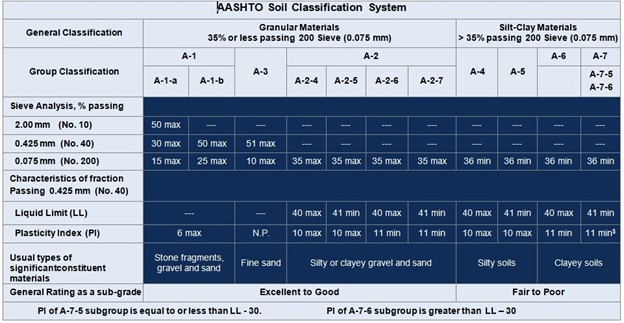
Conclusion
Professionally understanding the subgrade of road construction is essential for construction durable roads. Each step, from clearing and grubbing to selecting the right material for embankment, plays an important role in creating a stable foundation. Proper cutting and filling ensures a balanced layout and level, while a proper subgrade preparation procedure sets the groundwork for long lasting strength. These steps collectively ensure road stability and durability.

